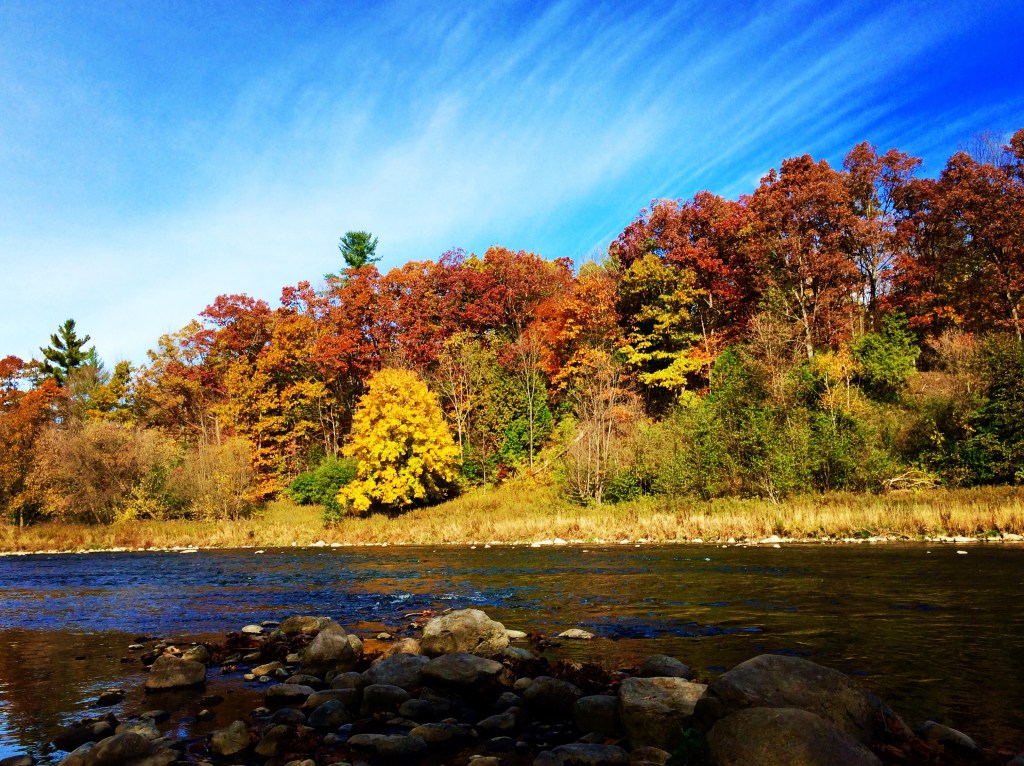The Thames River Is The Lifeblood Of London Ontario
Running throughout all of London Ontario as veins carrying the lifeblood of this beautiful city is the Thames River. It could even be argued that without this beautiful and picturesque river, there would be no London Ontario.
John Graves Simcoe, who was a lieutenant-governor of Upper Canada, named the river the Thames in 1793 after the River Thames in England. He also declared the forks of the river as the capital for the colony (although it did not end up being the capital).
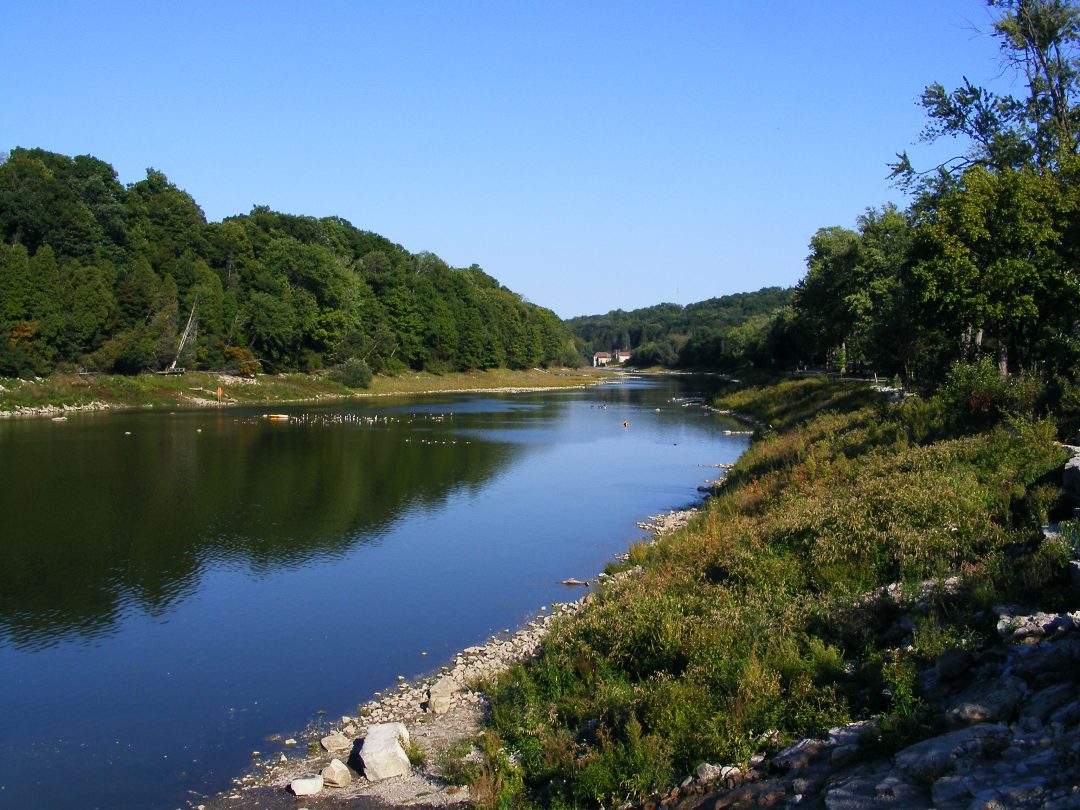 Of course, if you have actually been to England to see the River Thames, John Graves Simcoe was being more than generous in declaring it so, but the Thames River is still a beautiful part of the city that has brought with it economical and ecological significance.
Of course, if you have actually been to England to see the River Thames, John Graves Simcoe was being more than generous in declaring it so, but the Thames River is still a beautiful part of the city that has brought with it economical and ecological significance.
Over the years, London Ontario has seen the Thames River used for transportation and mills. It has brought industry, trades, and independence to the city. The Thames River has seen tragedy. Wars have been fought here. It brought commercial farming. And it has connected the city with nature.
London, Ontario is a beautiful city that is known for being the Forest City. It’s because of the river banks and the plants and wildlife that it brings that helps to shape London into being a city that is industrious and successful while also being a city that is connected with nature.
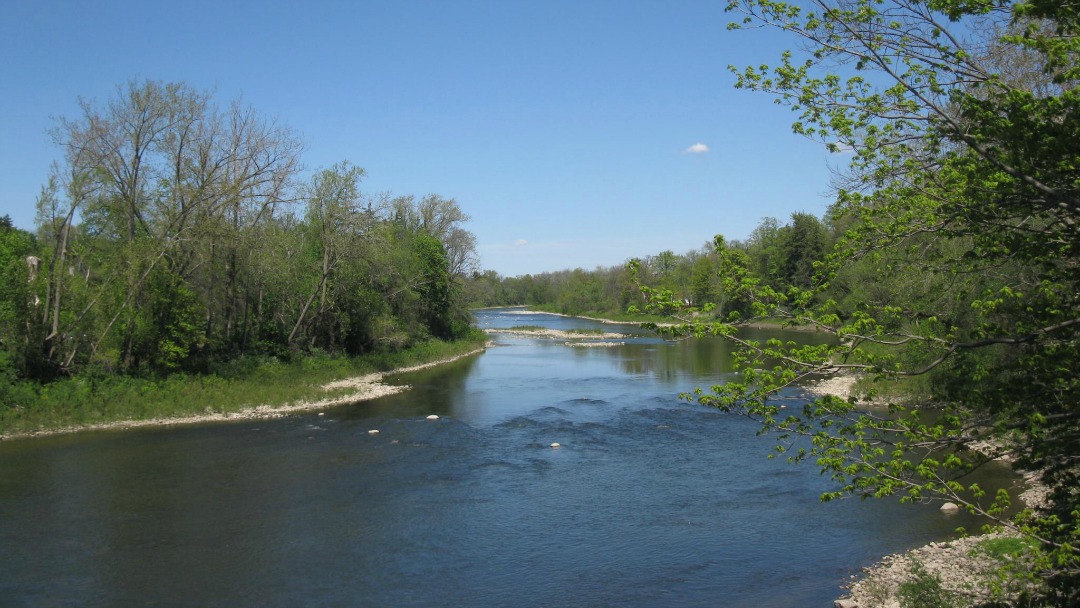 The river connects us with our past. So much of the Thames River still looks like it did over 200 years ago. We’ve protected the rare wildlife that lives here because of the river.
The river connects us with our past. So much of the Thames River still looks like it did over 200 years ago. We’ve protected the rare wildlife that lives here because of the river.
The Thames River has been so much more than just a beautiful and picturesque waterpiece to look at in the city. It has been the lifeblood of this great city, flowing like veins through every part. It’s part of our quality of life here. It’s part of our economic growth here. It’s part of our past, it’s what we enjoy in the present, and it’s essential for our future.
The History
The Thames River has had an interesting history that has not always been positive and sunny. It was a significant location during the war of 1812. In fact, one of the battles was named The Battle of the Thames. On October 5, 1813, American General William Henry Harrison fought against the British General Henry Proctor, who was also joined by his Native American ally, Chief Tecumseh. Chief Tecumseh’s life was claimed in battle.
Then in 1881 a river steamer named “Victoria” sank. There were 182 passengers that died that day. Luckily, after that, a law was made that prevented all ferries from carrying anything that was above their max capacity.
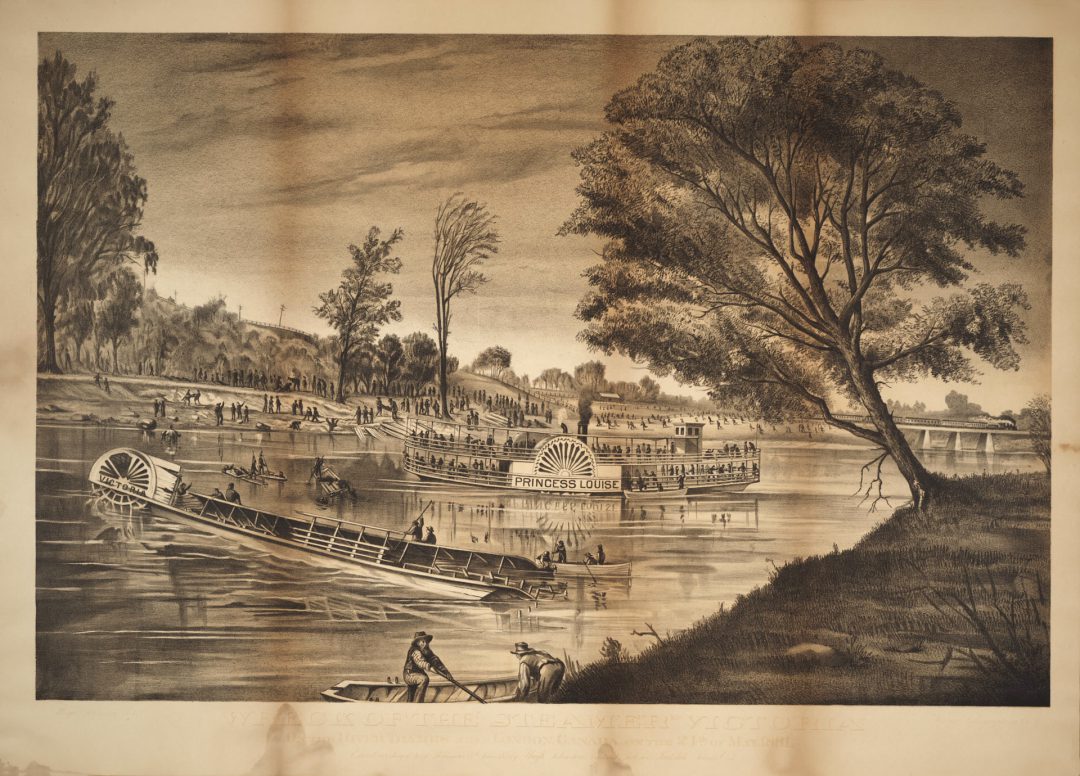 Years later still, in 1883, there were heavy rains that flooded the Thames river. One ferry called “Princess Louise” ended up going over the Waterworks Dam because of the flooding and capsized. Seven people were killed in the accident.
Years later still, in 1883, there were heavy rains that flooded the Thames river. One ferry called “Princess Louise” ended up going over the Waterworks Dam because of the flooding and capsized. Seven people were killed in the accident.
In 1899, a propeller boat that was named “Thames” caught on fire and sunk.
The bad luck on the Thames continued in 1937 when the Thames River was flooded, reaching historical highs. This flooding resulted in 5 deaths and more than a thousand homes being destroyed.
The last of the bad luck for the Thames River happened in 1950 when another boat capsized, taking with it the lives of 4 passengers.
Finally, in 2000, the Thames River was designated as a Canadian Heritage River.
Ecological Significance
Rivers are not just park of the aesthetics of a town. Back in the day they were part of the reasons why people chose to settle in a place and were part of the economics and wealth of townsteads. More than that, rivers are part of the ecology of the land around them. They bring vegetation and wildlife that are essential parts of nature. Here are some of the ways that the Thames River contributes to our natural surroundings.
Wetlands
One of the natural occurrences that take place when there are large bodies of water is wetlands. Wetlands are basically just places that are either always or seasonally flooded by a bit of water or where the water table is close to the surface, and it creates swamps, marshes, bogs and fens. Wetlands are so important for the environment. Because of their ecological conditions, wetlands are home to all kinds of plants and wildlife that need that specific state to grow and thrive.
The Thames River has 31 provincially significant wetlands, and 35 of the wetlands are locally significant. The Sifton Bog, which is located in Oakridge, is a wetland that has been labeled as an Environmentally Significant Area. Sifton Bog has a 2.7km trail and a 370 meter boardwalk which leads to the center of the bog for viewing.
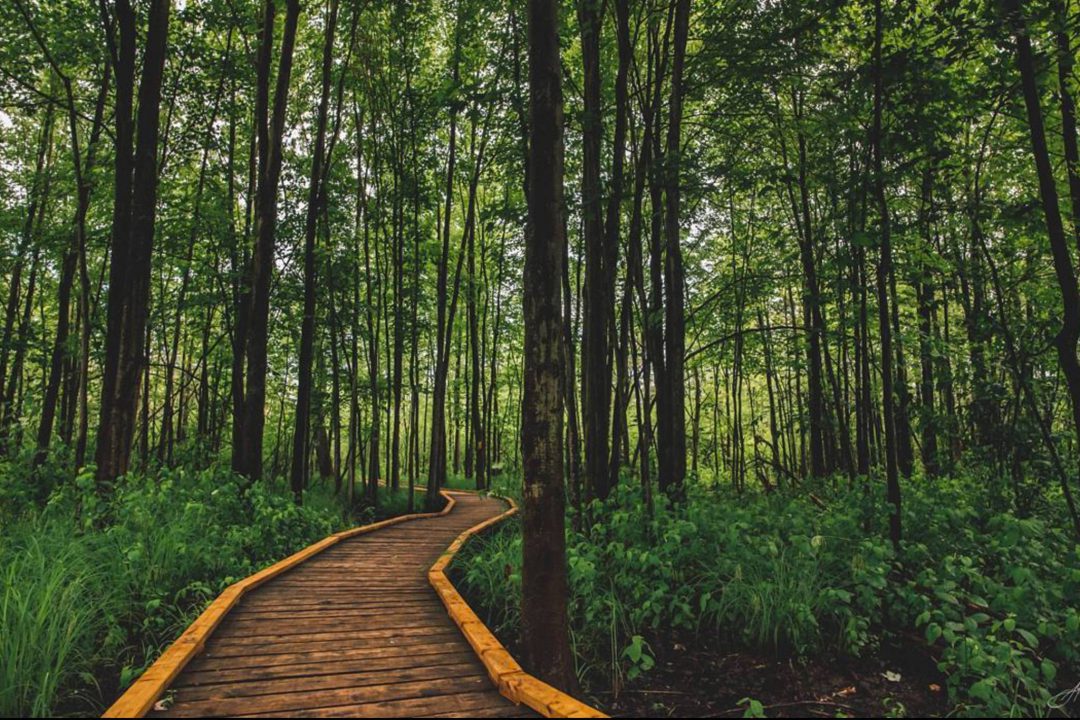
The Banks and waters
The banks and waters of the Thames is teeming with a diverse spectrum of species and and plants. Its shores are lined with tree species such as sassafras, paw paw, and Kentucky coffee. The conditions that the Thames River provides for fish and wildlife is perfect for many species that are rarely found anywhere else in Canada. Some of those species include the queen snake, the black redhorse, and the eastern spiny softshell turtle. A number of these rare species are also At Risk species, and there are committees designated to try and protect them, which is why it is always important to respect the River and the lands around it.
Fishing
Fishing in the Thames River is completely acceptable as long as you have a valid fishing license on you. The best spots for fishing on the Thames are at Fanshawe Conservation Area, Wildwood Conservation Area, and Pittock Conservation Area. You can fish from boat or from the shore at these places. That being said, you can fish from anywhere along the Thames River.
Personally, I’ve experienced a lot of success fishing from the shore in Kains Woods. I’ve even had success fishing off the Thames River in Springbank Park. You’ll be able to catch perch, bass, northern pike, and walleye in the Thames in a variety of different sizes.
Fishing is a great hobby. It gets you outdoors and enjoying nature. It keeps you connected with the earth. It’s fun—who doesn’t love the thrill of landing a really big fish and fighting it to shore? And it can be a great way to practice eating local.
Biking
One of my absolute favourite things to do from spring to fall is bike outside. London is lucky enough to have bike paths that go across the city, through parks, and run along the Thames River. There is no better motivator to get out there and bike, or to keep biking if you’re already out, than stunning views of a picturesque park with a glittering river flowing beside you as you cruise along.
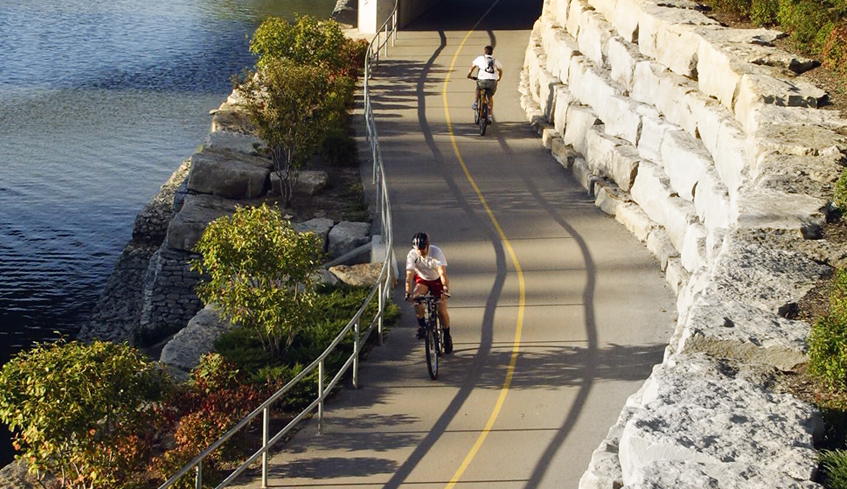
The Sites
In London, we have a bunch of unique and interesting ways to view the Thames River. Since it flows and winds through our city, you can enjoy the river from different locations and avenues. Here are some of the best ways.
Kains Woods
Kains Woods, which is located in the Riverbend neighbourhood, is one of the most beautiful wooded areas to walk through in London. It is located right behind the RiverBend Golf Club and takes place along the bend of the Thames River. It’s filled with wildlife. The deer are pretty friendly are not skittish. The view of the river from beneath a canopy of trees is absolutely beautiful. Kains Woods even has one small rock-beach section if it’s a hot day and you feel like dipping your toes in the cool and refreshing river.
It’s also an amazing place to Kayak or canoe. The sun sparkles off of the gorgeous river as you kayak down with stunning forest views on either side of the shore: who wouldn’t want that for a summer afternoon?
Komoka Provincial Park
Komoka Provincial Park is a large green space with absolutely breathtaking views of the river. It has elevated parts that are high up and give you a bird’s eye view of the Thames below. There are horseback riding trails, hiking trails, fishing spots, and even mountain biking trails. It’s in the Kilworth neighborhood, so you do not have to drive far or even out of the city to experience a beautiful provincial park nestled along the Thames River.
Fanshawe Conservation Area
Fanshawe Conservation Area is an absolute must-visit for anyone in London who wants to head back to nature without leaving the city. It has stunning hiking trails (one is a day-long 20km that is shared with bikes, while the other is a shorter 3.4km and is for hikers only) with beautiful sites of the Thames River.
They also have an absolutely stunning 20km mountain biking trail for those who love a little thrill. You’ll be going through rooted areas, meadows, up hills, and riding along the gorgeous Thames River. There are even a few technically difficult areas that are optional for skilled mountain bikers.
Fanshawe Conservation Area is also great for enjoying the water. They have kayaks and canoes for rent there, or you can bring your own. It would also be a great place for paddle boating. There is nothing that makes me think of a picturesque summer day like canoeing down the river with the sun shining on my face and gorgeous landscapes on either side of me.
Fanshawe Conservation Area also has camping, so you can enjoy all the fun of the river for more than just one day.
Downtown
The Thames River skirts along the edge of Downtown London Ontario, giving many of the high-rise buildings and office buildings in downtown a lovely view.
Michaels on the Thames is a restaurant on the edge of Downtown that was smart enough to take full advantage of this gorgeous aspect of the city. Their restaurant has giant windows that look out over the river as you sip on wine and enjoy delicious gourmet meals inside.
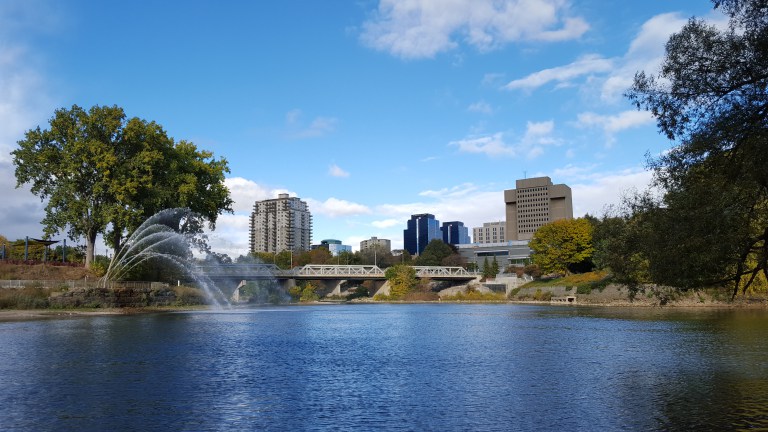
Parks
One of the things that I love best about living in London Ontario is the plethora of beautiful parks that we have access to. There are numerous parks scattered throughout the city so that no matter where you live, and no matter what kind of park that you enjoy going to, there is something for everyone. Luckily for us, since we have the Thames River flowing through the city, many of our parks are located on or near the River, giving us beautiful, picturesque views, as well as giving us enjoyable water activities such as fishing, boating, or admiring the water wildlife.
Some of the parks that you can find with stunning river views and fun include: Springbank Park, McKillop Park, Greenway Park, Ivey Park, Riverside Park, Harris Park, Waldorf Park, Ann Street Park, Gibbons Park, Kilally Valley Park.
Labatt Park
London’s own baseball stadium is located right on a fork of the Thames River, giving baseball loving fans a beautiful view. The stadium has 5,200 seats and is a natural grass field. The park is actually the “oldest continually operating baseball grounds in the world”, which is impressive. Clearly someone had a brilliant idea to build it right near the river, giving London a baseball stadium to be proud of operating. Learn more about London’s baseball history here.
Medway Valley Heritage Forest
The Medway Valley Heritage Forest is an area of cultural significance. It was once an Attawandaron village over 500 years ago. Then in the 19th and 20th century Europeans settled and farmed along there. You can even see remnants of a mill dam that was stationed there. The Upper Thames River Conservation Authority has acquired and been donated the land over the last 40 years. It’s been labelled as an Environmentally Significant Area. It has 10.6 kms of trails. The Medway Valley Heritage Forest is teeming with incredible wildlife, including muskrat, mink, beavers and flying squirrels. The waters are filled with over 43 species of fish and the trees are filled with birds that range from Warblers to Osprey.
The Thames River is such a vital part of what makes London Ontario such a great city to live in. It has been essential to establishing London as a city. It has brought great economical advantages, such as mills, farming, and transportation. It has been essential to our ecological well being, being home to rare species and creating the conditions necessary for plants and wildlife. It has been part of our general enjoyment, giving us beautiful views, stunning places to relax, and bringing nature into the daily city life.


